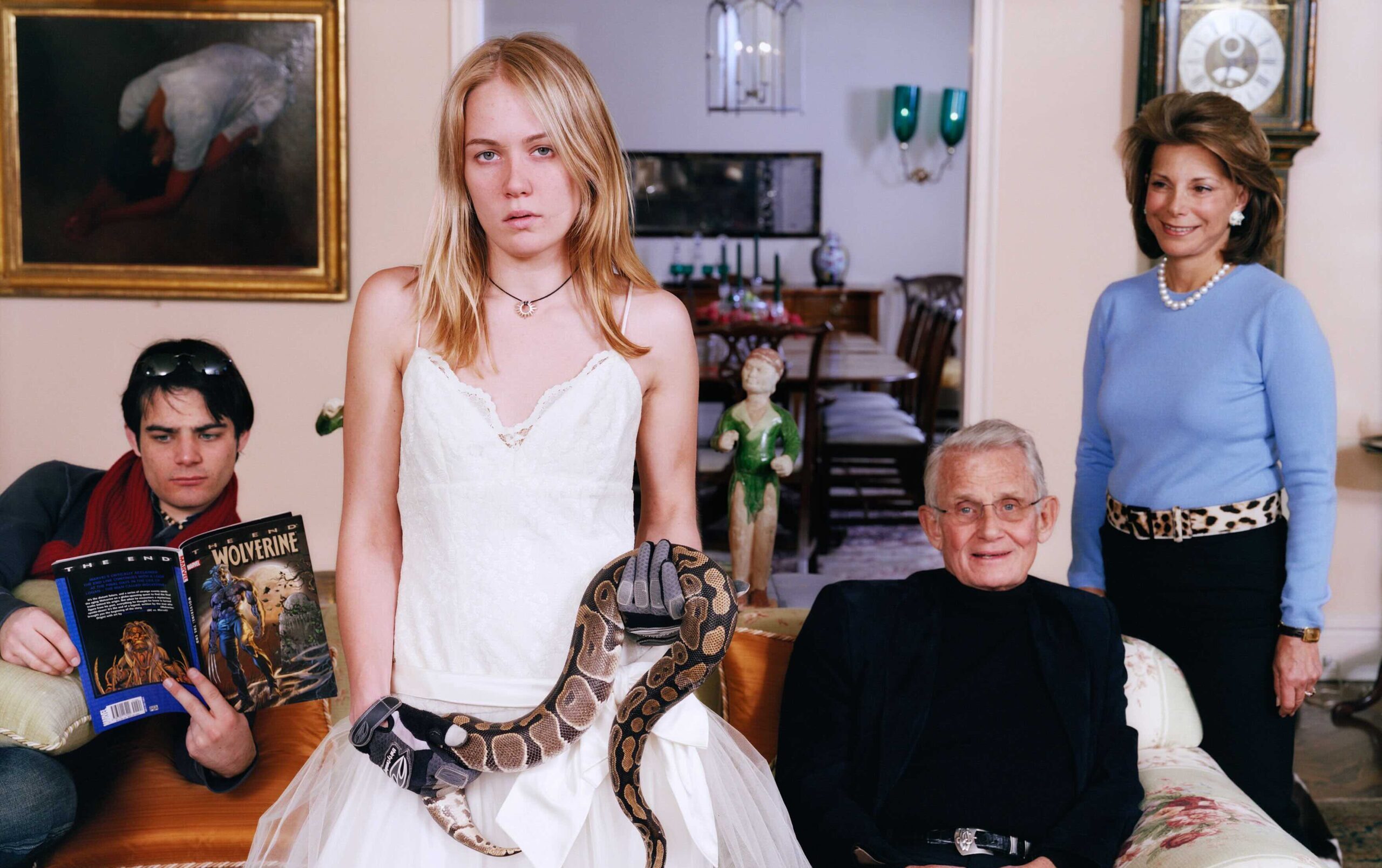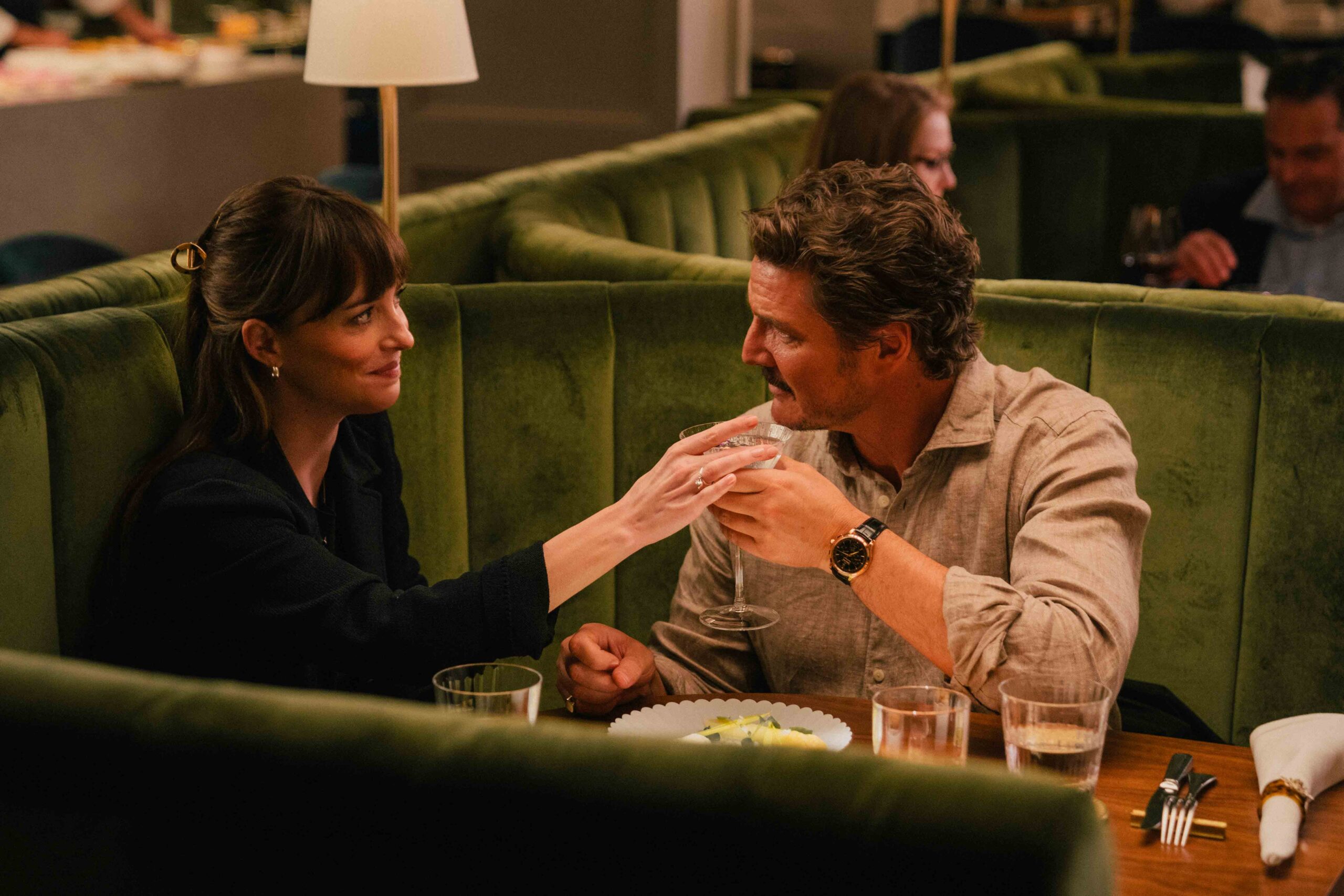Tina Barney. Family Ties
Jeu de Paume, Paris
From 28 September, 2024 to 19 January, 2025
Tina Barney. Family Ties will be the artist’s first European retrospective and will cover more than 40 years of her work. Born in 1945, Tina Barney began photographing family and friends in the late 1970s. A keen observer of family traditions, her work focuses on cultural mores within domestic environments. Her portraits, characterised by bright colours and large format, may at first glance appear to be simple family snapshots, but they are often carefully constructed by the artist, creating complex tableaux that establish a dialogue with classical painting.
Tina Barney was born in New York in 1945. From childhood, Barney was exposed to photography by her maternal grandfather: she began experimenting with photography when she and her family moved to Sun Valley, Idaho, in 1973, where she lived until her return to New York City in 1983. Today, her work is included in important international collections: the exhibition at Jeu de Paume includes editorial works in which the portraits of celebrities and models taken for fashion magazines and luxury brands share the same complexity, sensitivity and irony found in her artwork. Family Ties presents fifty-five large-format works from Barney’s earliest to his most recent series, many of which have never been exhibited in Europe. Barney’s experimental approach to photography emerged in the 1970s: in 1981 he switched from a hand-held 35mm Pentax to a Toyo 4×5 on a tripod, and during the 1980s his early viral images revealed to the public a world rarely seen in photography, offering viewers an intimate glimpse into the lives of the upper-middle class on America’s East Coast. At various holiday venues, birthday parties (The Children’s Party, 1986), weddings (Bridesmaids in Pink, 1995), backyard barbecues (Tim, Phil, and I, 1989) and family lunches at his Rhode Island home, Barney explores the social habits of his subjects during these years, revealing a fine line between intense concentration and listless restlessness. His models pose like actors in a theatre or film scene, as the artist quickly recreates micro gestures and gives informal instructions. With the spontaneity of a snapshot, The Reception (1985), for instance, sees Barney carefully directing guests at his sister’s wedding.
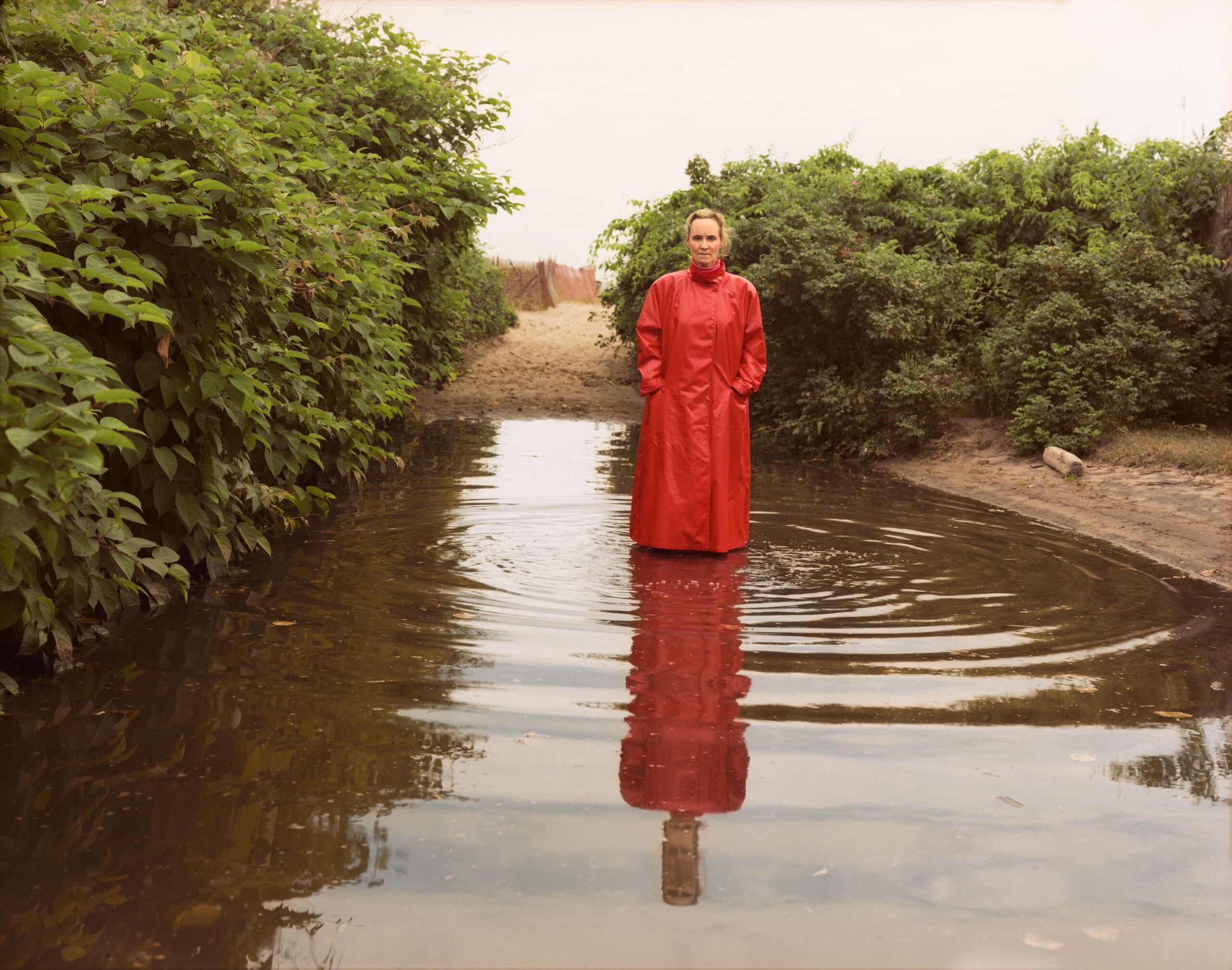
OPENING IMAGE: Family Commisson With Snake (Close Up), 2007.
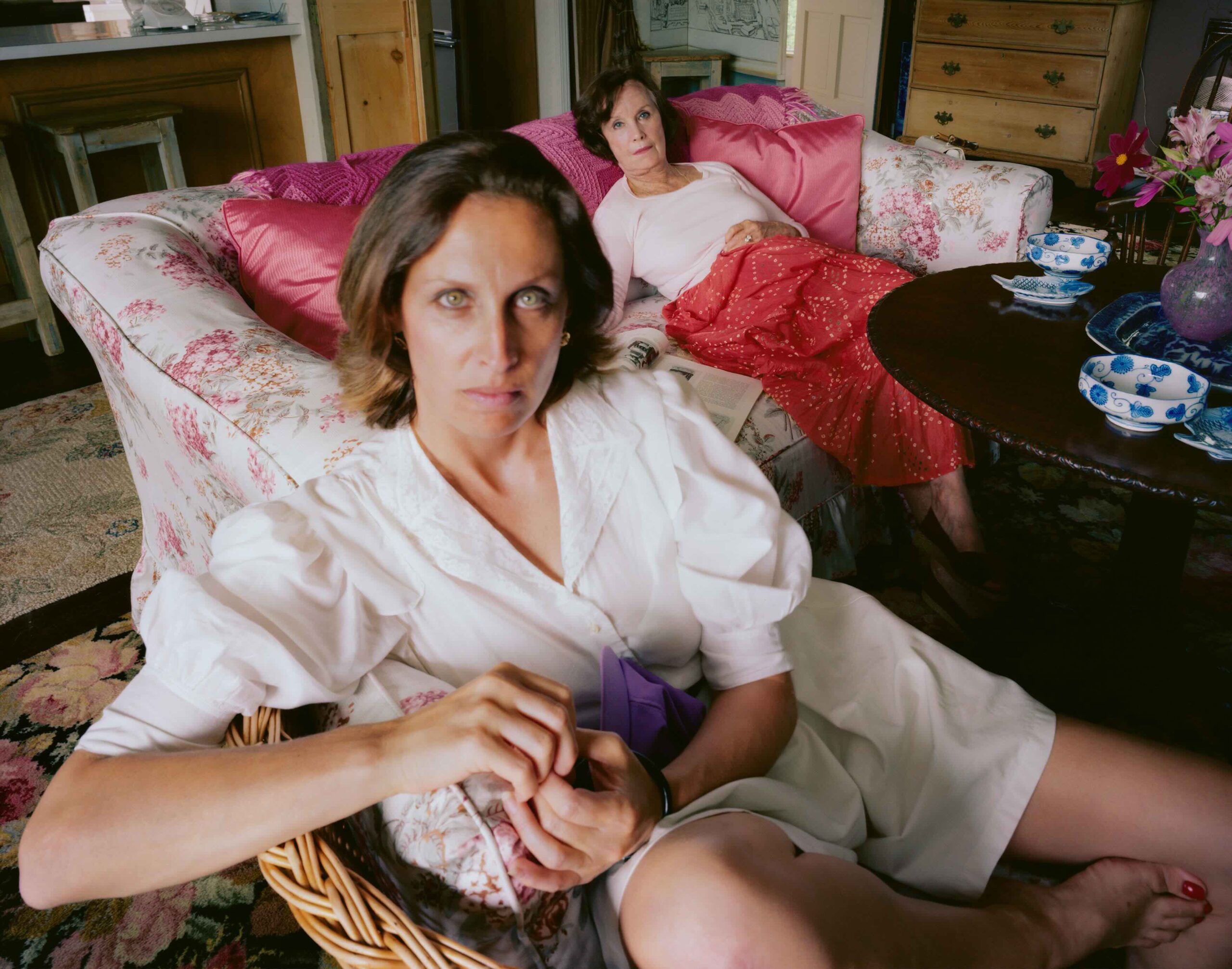
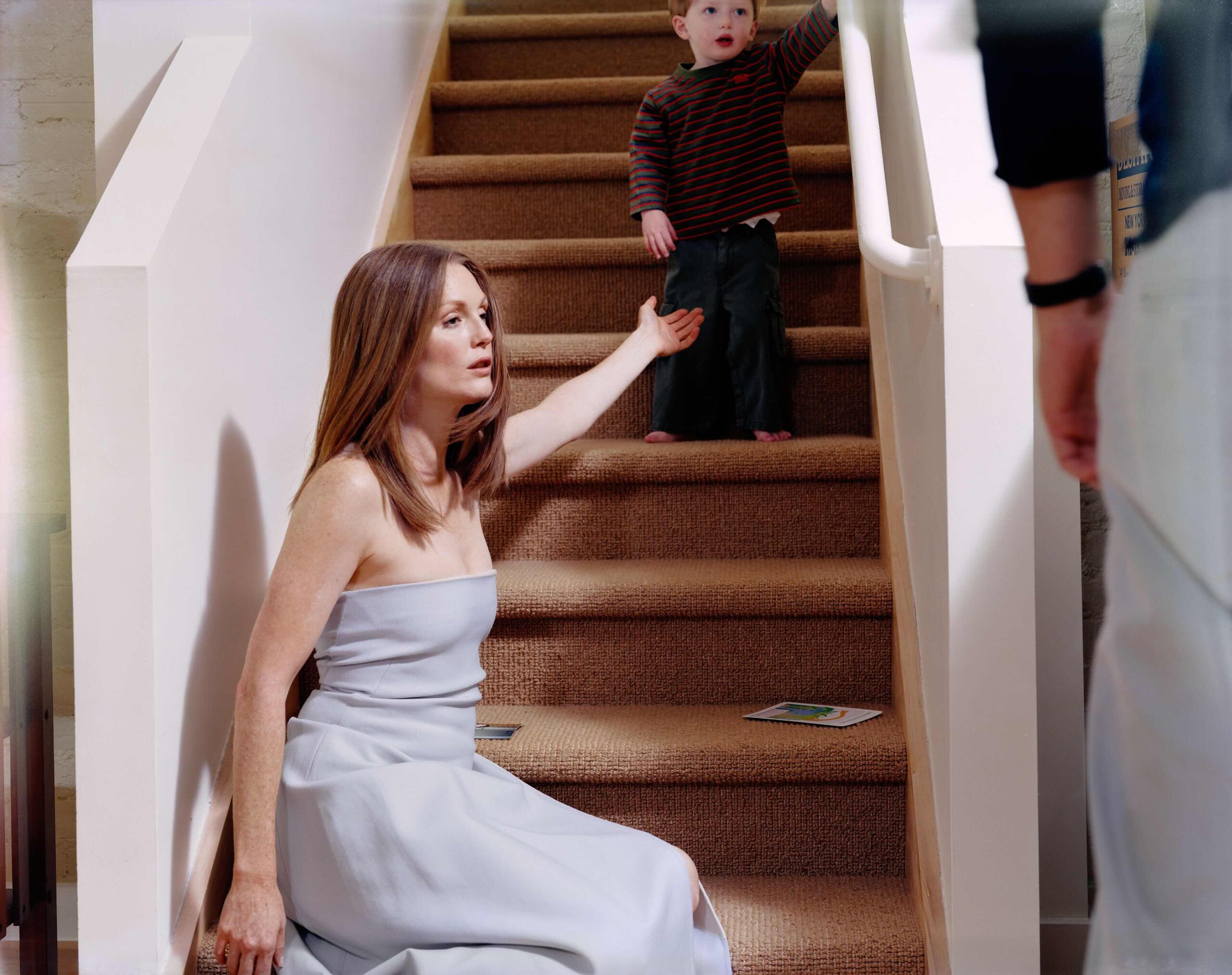
“The very concept of the portrait is my great love. The questions and answers in it can go on forever. It is what happens in the gaze, or with a tilt of the head. I go on because it is too interesting to stop”.
Between 1996 and 2004, Barney travelled to Italy, the UK, Austria, France, Spain and Germany, focusing on collective social patterns and customs rather than individuals. In these works, traditional motifs often blend with contemporary elements, while figures of European aristocracy pose pictorially, evoking 18th century British conversation pieces. Working in large format, Barney highlights the exquisite detail in the fabrics and colours of his subjects’ clothing, furniture and furnishings, focusing on the visual cultures and materials that influence their mannerisms. The exhibition explores the theatrical dimension of his mise-en-scène, focusing on the work with his subjects and the construction of space. Undoubtedly, Barney’s work shows a certain narrative tendency.
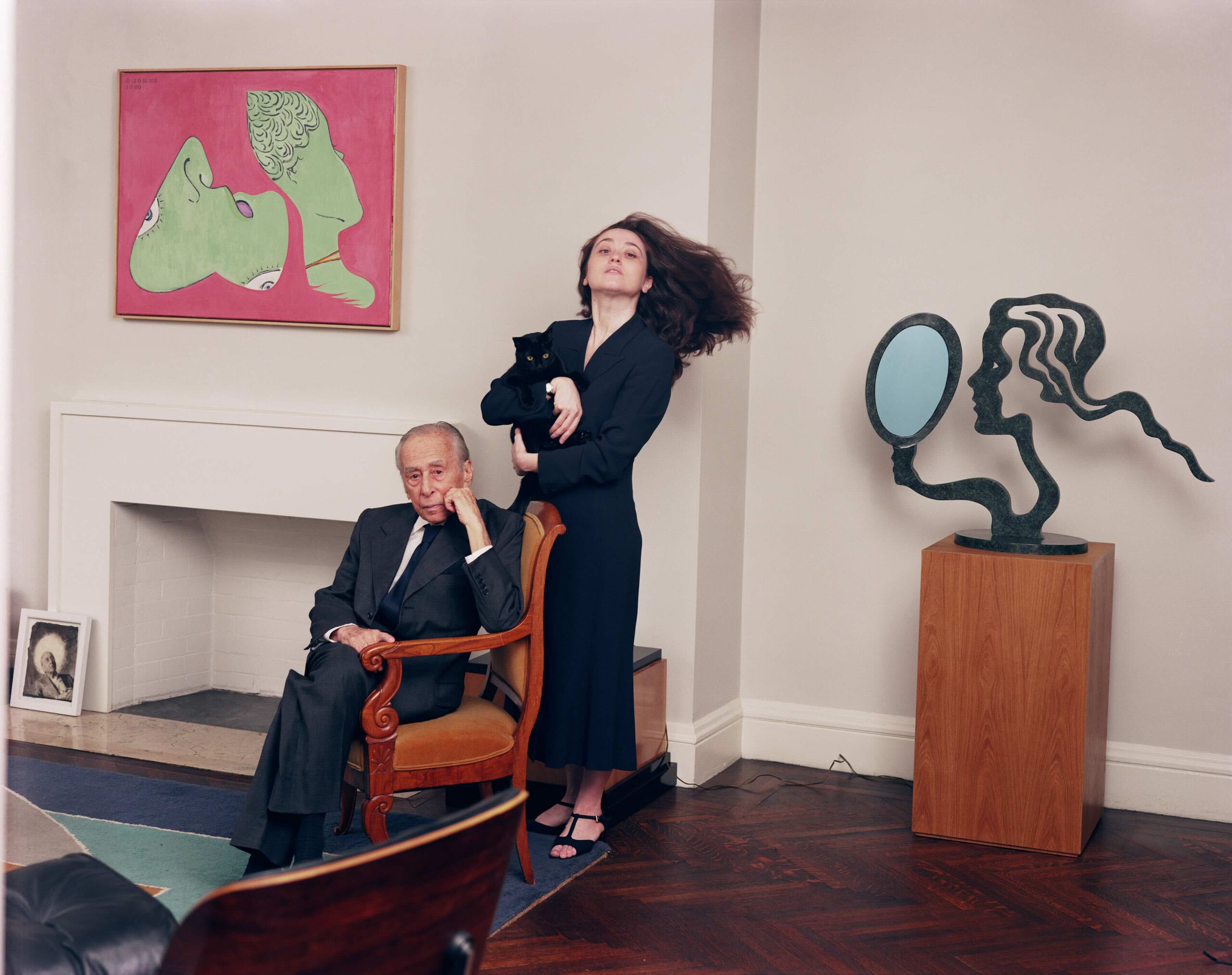
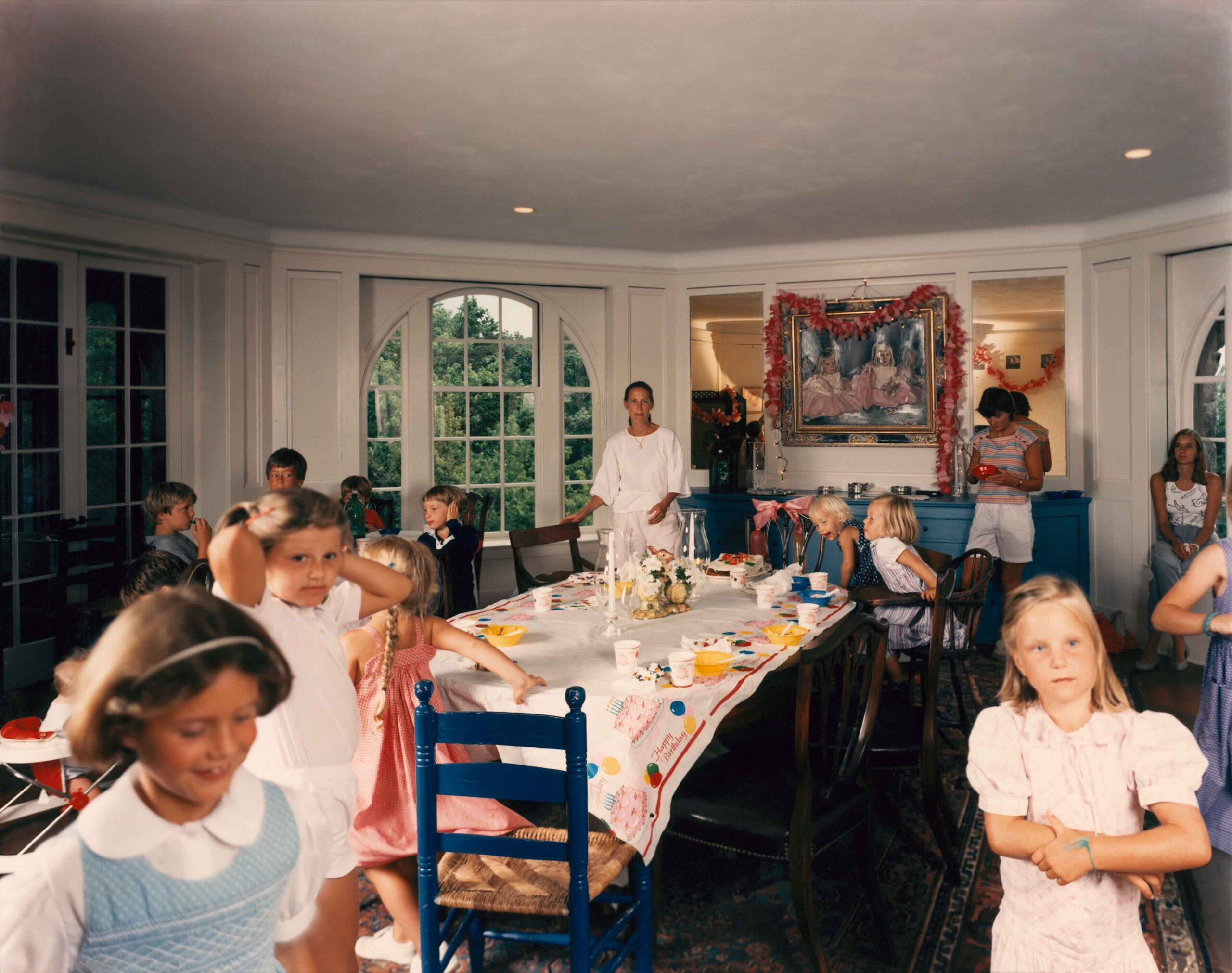
In the early 1990s, Barney began collaborating with several magazines and newspapers, including The Daily Telegraph, W, Arena Homme Plus, Hommes Vogue International and Vogue US, reinforcing his interest in the formal and compositional possibilities of photography in which costumes, environments and circumstances are already pre-defined. Family Ties will not follow a strictly chronological approach, but will present specific themes that have run through Barney’s diverse body of work over more than four decades. For instance, the family – a central theme since the beginning of his photographic practice in 1976 – appears in works such as Jill and Mom (1983), an intimate scene in which the artist’s sister and mother face the camera in relaxed attitudes. Almost twenty years later, The Daughters (2002) takes up the dynamic between mother and daughter in a portrait of a French family that Barney had never met before.
Tina Barney. Family Ties will be accompanied by a catalogue with an essay by exhibition curator Quentin Bajac, director of the Jeu de Paume, and an interview between Tina Barney and Sarah Meister, executive director of Aperture, and a text by James Welling.
For further information jeudepaume.org.
